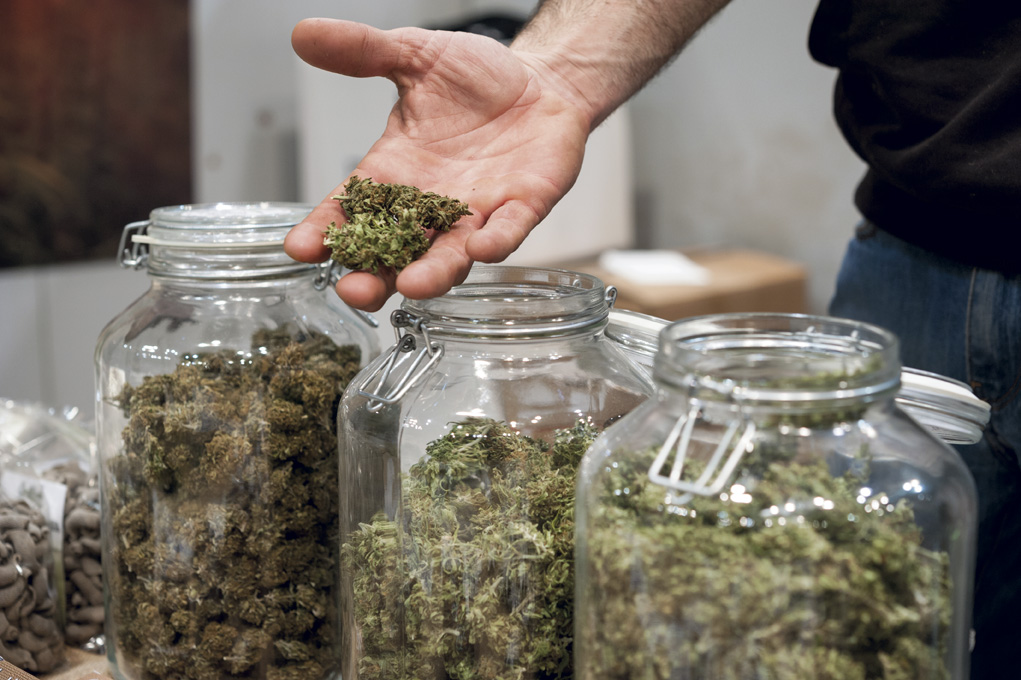LEGAL MARIJUANA LIABILITY
Who needs to worry about marijuana-related liability?
By Dave Willis, CPIA
Right now, the use of marijuana for medical purposes is legal in a third of the United States. Ten states have legalized it for recreational purposes—with more expected to do so in the next few years. At the same time, marijuana is illegal in all 50 states, because the federal government had declared it so. And therein lies the foundation of liability and related problems in the cannabis industry.
Advisen LLC founder David Bradford, at a Target Markets Program Administrators Association mid-year meeting session earlier this year, offered insight into marijuana liability issues based on data gathered by his firm.
Quick to note that he’s not a lawyer and, as such, he’s not offering legal advice, Bradford, who serves as chief strategy officer and director of strategic partnership development at Advisen, explained that Advisen is “focused on bringing information to the insurance industry that they may have difficulty getting themselves. Marijuana is an area we think a lot of insurers will be moving to in the near future, but nobody has claims data yet.”
So, his firm set about finding and compiling data—as of May, about 750 loss events in its database have marijuana or cannabis somewhere in their description—and started to identify various trends going on in the marijuana liability arena.
Early in his remarks, Bradford recounted a visit to Seattle he made a few years ago. “My hotel was just down the street from a marijuana dispensary, and I thought it’d be interesting to check it out,” he explained. “I’m not sure what I expected to find—maybe middle-aged hippies behind the counter handing out little plastic bags of loose flowers. I was not expecting a marijuana superstore, which is what it really was.”
They had some 100 varieties of marijuana available in bags—or already rolled in joints. They also offered “all kinds of edibles, oils, bombs, and of course, all the paraphernalia,” Bradford explained. “And the staff were really marijuana counselors”—willing to take time with customers to figure out what they expected from their marijuana experience and make recommendations.

-David Bradford
Founder
Advisen
“Compare that to 50 years ago and it’s a pretty remarkable transformation,” he noted. “That’s when, I believe, every state had criminalized marijuana possession, and the U.S. Congress was on the verge of passing the Controlled Substances Act, which classified marijuana in the same category as heroin and other serious narcotic drugs.”
Attitudes have changed over the years. “We’re at a point now where 71% of Americans say that they would like to see marijuana legalized at the federal level,” Bradford shared. Resistance to de-scheduling marijuana seems to be eroding as well. He said marketplace observers think the votes are probably there in Congress to do it now, but there’s a reluctance to make it an issue in the upcoming elections, so it’s likely that probably nothing will happen until after that is done.
For now, the situation is complicated, featuring an expanding array of state marijuana laws that must be dealt with state by state. “And the laws that are being passed in the states do not necessarily resemble each other very much at all,” Bradford notes. “It’s the same sort of thing we’ve dealt with in the insurance industry and are comfortable with now.”
On the medical front, there’s a long list of things marijuana is being used to treat. “But interestingly, doctors cannot prescribe it because it’s illegal at the federal level,” he explained. “So they ‘recommend’ it. ‘Recommending’ and ‘prescribing’ usually would be essentially the same thing. But it does have an implication when you’re looking at, for instance, the rights of employers to control medical marijuana use within the workplace.” Two compounds are part of the discussion: THC and CBD. THC has a psychoactive effect and makes one high. CBD does not.
Liability issues
Who needs to worry about marijuana-related liability? “Anybody in the marijuana supply chain,” Bradford explained. “Obviously, if you are a grower, a processor or manufacturer, a lab, or a dispensary, you have various liability issues related to the product. Doctors do as well. And frankly, every employer does, too.”
Growers represent the first link in the supply chain. “In some cases, their product goes directly to the dispensaries,” he noted. “Sometimes it goes to a manufacturer or processor, who will turn it into edibles of some sort, or into medication, creams, cosmetics—there are all kinds of products.”
Depending on state law or supply-chain-participant diligence, the product may go to a lab to be tested. But that’s apparently the exception. “My understanding is most do not require lab testing; a few do,” Bradford said. “But, as we’ll see, that’s a pretty critical issue when we start to talk about liability, and product liability in particular.”
The last step in the supply chain is the dispensary.
“These companies have the same liability issues and the same insurance issues as any other company,” he explained. “But some liability issues are pretty distinctive and unique to the marijuana business.”
 Growers deal with product liability, intellectual property, diminished property value (RICO), and nuisance/emotional distress exposures. “You can patent plants,” Bradford notes. “A number of strains of marijuana have been patented at this point in time. We can expect to see some litigation in the future with respect to some of these patent issues.”
Growers deal with product liability, intellectual property, diminished property value (RICO), and nuisance/emotional distress exposures. “You can patent plants,” Bradford notes. “A number of strains of marijuana have been patented at this point in time. We can expect to see some litigation in the future with respect to some of these patent issues.”
Another challenge comes from neighbors of growers. “They, and to a lesser degree neighbors of dispensaries, are filing suits saying because they are sitting next to this farm with the smell of marijuana wafting over to their property, or just because of the nature of the business there, their property value has been diminished.”
For growers, manufacturers and processors—and perhaps others in the chain—product liability concerns exist. “It’s a fairly scary exposure, although it certainly should be able to be managed,” Bradford said. “From the grower’s standpoint, a big issue is pesticides, as well as mold and spores and fungus and other things getting into the plants.
“If you don’t have labs inspecting [product] and passing judgment on its purity, and you have bad batches coming from the growers, they’ll end up at the manufacturers and in edibles and other products,” he noted. “It’s going to end up at the dispensaries as well.”
Manufacturers also have a big issue with labeling. “There have been a number of cases of people who don’t realize that edibles don’t affect you the same way smoking does; it takes much longer for edibles to have an effect on you,” he explained. “So they buy the candy or the brownies and eat it. They wait for 10 minutes and nothing’s happening, so they eat some more. Still nothing’s happening, so they eat some more.” Before long, they’ve over consumed marijuana.
Growers and dispensaries have professional liability exposures. “In essence, some dispensary employees are acting like pharmacists, but obviously without pharmacist training,” Bradford explained. “As I mentioned, my experience in Seattle was that the people in the store are acting as counselors, giving advice, walking you through and suggesting different products. So, if things go awry, there’s definitely a professional liability exposure.”
Bradford addressed numerous other supply chain liability risks, as well as employer-related risks. To listen to a recording of his remarks, visit bit.ly/RNMJLiability.




